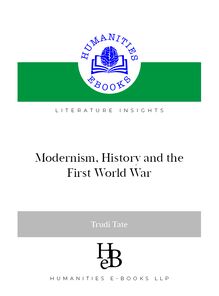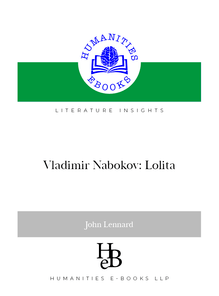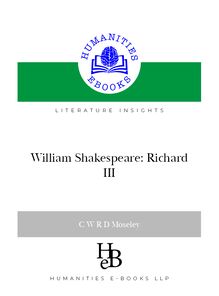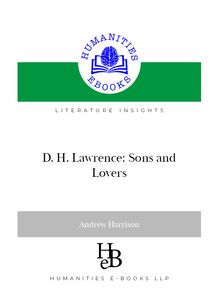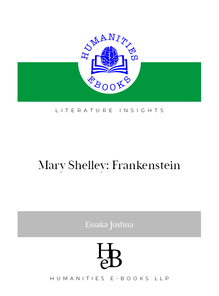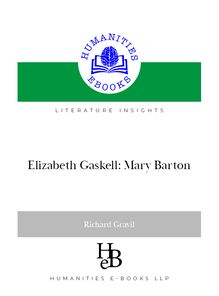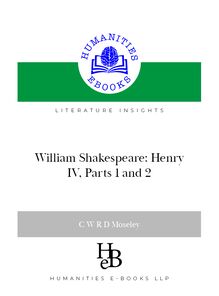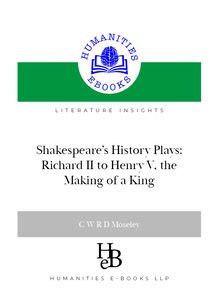-
 Univers
Univers
-
 Ebooks
Ebooks
-
 Livres audio
Livres audio
-
 Presse
Presse
-
 Podcasts
Podcasts
-
 BD
BD
-
 Documents
Documents
-
- Cours
- Révisions
- Ressources pédagogiques
- Sciences de l’éducation
- Manuels scolaires
- Langues
- Travaux de classe
- Annales de BEP
- Etudes supérieures
- Maternelle et primaire
- Fiches de lecture
- Orientation scolaire
- Méthodologie
- Corrigés de devoir
- Annales d’examens et concours
- Annales du bac
- Annales du brevet
- Rapports de stage
La lecture à portée de main
74 pages
English
Découvre YouScribe en t'inscrivant gratuitement
Je m'inscrisDécouvre YouScribe en t'inscrivant gratuitement
Je m'inscris
Obtenez un accès à la bibliothèque pour le consulter en ligne
En savoir plus
En savoir plus
74 pages
English
Obtenez un accès à la bibliothèque pour le consulter en ligne
En savoir plus
En savoir plus

Description
An introduction to a work generally considered Lawrence's greatest novel, and by some readers, the greatest English novel of the twentieth century.
Sujets
Informations
| Publié par | Humanities eBooks |
| Date de parution | 11 janvier 2021 |
| Nombre de lectures | 0 |
| EAN13 | 9781847600196 |
| Langue | English |
Informations légales : prix de location à la page 0,0000€. Cette information est donnée uniquement à titre indicatif conformément à la législation en vigueur.
Extrait
Literature Insights General Editor: Charles Moseley
D. H. LàwrEnCE Women in Love
NEIl ROBErTS
RUnnInG HEàd 1
“ You mustn’t look in my novel for the old stable ego of the character ”
http//www.humanities-ebooks.co.uk FoRaDviceoNuseoFtHisebookpLeasescRoLLtopage2
publicationdata
© neIL ROBerTS, 2007
The Author has asserted his right to be identiîed as the author of this Work IN àCCOrDàNCe wITh The cOPyrIGhT, deSIGNS àND pàTeNTS aCT 1988.
pUBLISheD ByHumanities-Ebooks.co.uk tIrrIL HàLL, tIrrIL, peNrITh ca10 2JE
REadingoptions
*To use the navigation tools, the search facility, and other features of the Adobe toolbar, this Ebook should be read in default view. *To navigate through the contents use the hyperlinked ‘Bookmarks’ at the left of the screen. *To search, expand the search column at the right of the screen or click on the binocular symbol in the toolbar. *For ease of reading, use <CTRL+L> to enlarge the page to full screen *Use <Esc> to return to the full menu. *Hyperlinks appear in Blue Underlined Text.
licEncEandpERmissions
Purchasing this book licenses you to read this work on-screen and to print one copy for your own use. Copy and paste functions are disabled. No part of this publication may be otherwise reproduced or transmitted or distributed without the prior written permission of both the copyright owner and the pub-lisher. Making or distributing copies of this book constitutes copyright infringe-ment and would be liable to prosecution. Thank you for respecting the rights of the author.
isbn 978-1-84760-019-6
D. H. Lawrence: ‘Women in Love’
Neil Roberts
Bibliographical Entry: Roberts, Neil.D H Lawrence: ‘Women in Love’. Literature Insights. Tirril: Humanities-Ebooks, 2007
A Note on the Author
Neil Roberts studied English at the University of Cambridge where he took an MA and PhD. Since 1970 he has taught at the University of Shefîeld, where he is Profes-sor of English Literature. He is the author ofGeorge Eliot: Her Beliefs and Her Art (Elek, 1975),Ted Hughes: A Critical Study(with Terry Gifford, Faber, 1981),The Lover, the Dreamer and the World: the Poetry of Peter Redgrove(Shefîeld Academ-ic Press, 1994),Meredith and the Novel(Macmillan, 1997),Narrative and Voice in Postwar Poetry(Longman, 1999),D. H. Lawrence , Travel and Cultural Difference(Palgrave, 2004) andTed Hughes: A Literary Life(Palgrave, 2006), and editor ofA Companion to Twentieth-Century Poetry(Blackwell, 2001).
Contents
A Note on the Author Part 1: The context ofWomen in Love 1.1 General Introduction 1.2 Lawrence’s early life and work 1.3 The composition ofWomen in Love 1.4Women in Loveand the First World War 1.5 People, Places and Libel Threats 1.6 Sexuality 1.7 Class Part 2: Artistic Inuences and Strategies 2.1 Tradition and Experiment 2.2 Thomas Hardy and the Russian Novel 2.3 ‘You mustn’t look in my novel for the old stable ego of the character’ 2.4 Modernist movements: Futurism, Imagism, Expressionism 2.5 Morality and the Novel Part 3: ReadingWomen in Love Part 4: Reception Part 5: Bibliography 5.1 Main text 5.2 Other works by Lawrence 5.3 Biography 5.4 Criticism 5.4 Other works Part 6: Hyperlinked Materials
Part 1: The context ofWomen in Love
1.1 General Introduction
When Lawrence’s reputation was at its height, in the 1950s and 60s,Women in Love was considered his greatest novel and, by some readers, the greatest English novel of the twentieth century. It is his most ambitious and experimental work, and attempts a radical critique of the modern world, and particularly of modern British society, at the moment when that world was coming into being, in the middle of the First World War. Lawrence’s reputation has declined since then, and readers who still admire his work are likely to espouse a more diverse Lawrence, whose qualities are spread over many and various works. However,Women in Loveremains one of the most stimu-lating and challenging texts of the early twentieth century, and if today’s readers are more likely than their predecessors to question its coherence and ideology, it contains some of the most brilliant writing in the literature of its period. In the îrst part of this study I shall be looking at various aspects of the context of the novel. What is its position in Lawrence’s work as a whole, and how does it relate to the works that went before it? What does it tells us about Lawrence’s relationship to the world he came from, the Nottinghamshire mining community? When and in what circumstances was the novel written? How should we understand its often puzzling representation of such matters as class and sexuality? In Part 2 I shall be discussing the speciîcally artistic aspects of the work, Part 3 will consist of a chapter-by-chapter analysis, and in Part 4 I shall trace the novel’s critical reception.
1.2 Lawrence’s early life and work
The main setting of the novel, Beldover, is closely modelled on Lawrence’s birthplace, the mining town of Eastwood in Nottinghamshire, where he spent the îrst twenty-three years of his life. His father was a barely literate coal-miner and his mother was what in a late poem he sarcastically called a ‘superior soul’: she did not, in fact, come from a socially or economically superior background to that of his father, but she became disenchanted with the rough manners of her working-class husband, and
Women in Love 7
with his drinking, and encouraged her sons to aspire to something ‘higher’. As a child and young man Lawrence had a close bond with and allegiance to his mother. These family relationships are portrayed in his îrst important novel, the one that made his reputation,Sons and Lovers. In that book the hero, Paul, is portrayed as hating his father and growing up with an exceptionally if not unnaturally close attachment to his mother. Not coincidentally, although he enjoys the company of women, who înd him a charming and sensitive companion, sexual relationships expose a painful divi-sion in him between the physical and spiritual aspects of love. Traces of this remain in Rupert Birkin, another character who is, to some degree, a self-portrait. In the course of his life, Lawrence’s attitude to his parents changed. He came increasingly to value his father’s warmth and spontaneity, and to see his mother as an epitome of the socially-aspiring suppression of these qualities. In an essay written in the last year of his life he described the miners as men with ‘an instinct of beauty’ who were ‘deeply alive, instinctively’ and ed to the pub ‘away from the nagging 1 materialism of the woman.’ In other words, Lawrence reinvented the past accord-ing to the feeling of the moment. We should bear this in mind when considering his representation of the mining town inWomen in Love. In this novel, Beldover is seen mainly through the eyes of the Brangwen sisters, who grew up there, as a place of ‘amorphous ugliness’ full of ‘ugly, meaningless people’; ‘a country in an underworld’ whose inhabitants hardly seem to be human beings (11–12). In this novel Lawrence often uses characters tofocaliseperceptions that he partly shares but also wants to distance himself from; and, unlike inSons and Lovers, the dominant îctional mode of Women in Loveis notrealism: Beldover îgures as one instance of an infernal world from which the characters are trying to escape. Even so, something of Lawrence’s shifting feeling about the place emerges in the novel when Gudrun succumbs to its ‘glamour’ (116), especially at the end of Chapter 9. Lawrence left Eastwood to become a teacher in Croydon, South London. During 2 this period he wrote his îrst two novels,The White PeacockandThe Trespasser, and had his îrst stories and poems published in the prestigious magazine,The English Review. At this time his relations with women were confused and unhappy. He had a long, intense but sexually inhibited relationship with Jessie Chambers, who grew up on a farm near Eastwood, became a teacher, and was the model for Miriam,
‘Nottingham and the Mining Countryside’,Phoenix, P. 136 Lawrence himself made the most cogent criticism of his îrst two novels, as early as 90, before either of them was published, when he promised thatPaul Morel(the futureSons and Lovers) ‘will be a novel—not a orid prose poem, or a decorated idyll running to seed in realism’ (LettersVOL.1, p. 84).
-
 Univers
Univers
-
 Ebooks
Ebooks
-
 Livres audio
Livres audio
-
 Presse
Presse
-
 Podcasts
Podcasts
-
 BD
BD
-
 Documents
Documents
-
Jeunesse
-
Littérature
-
Ressources professionnelles
-
Santé et bien-être
-
Savoirs
-
Education
-
Loisirs et hobbies
-
Art, musique et cinéma
-
Actualité et débat de société
-
Jeunesse
-
Littérature
-
Ressources professionnelles
-
Santé et bien-être
-
Savoirs
-
Education
-
Loisirs et hobbies
-
Art, musique et cinéma
-
Actualité et débat de société
-
Actualités
-
Lifestyle
-
Presse jeunesse
-
Presse professionnelle
-
Pratique
-
Presse sportive
-
Presse internationale
-
Culture & Médias
-
Action et Aventures
-
Science-fiction et Fantasy
-
Société
-
Jeunesse
-
Littérature
-
Ressources professionnelles
-
Santé et bien-être
-
Savoirs
-
Education
-
Loisirs et hobbies
-
Art, musique et cinéma
-
Actualité et débat de société
- Cours
- Révisions
- Ressources pédagogiques
- Sciences de l’éducation
- Manuels scolaires
- Langues
- Travaux de classe
- Annales de BEP
- Etudes supérieures
- Maternelle et primaire
- Fiches de lecture
- Orientation scolaire
- Méthodologie
- Corrigés de devoir
- Annales d’examens et concours
- Annales du bac
- Annales du brevet
- Rapports de stage
Signaler un problème
YouScribe
Le catalogue
Le service
© 2010-2024 YouScribe
